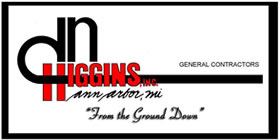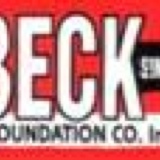Information
-
Project Name
-
Project Number
-
Date Completed
-
Prepared by
-
Location
SUPERINTENDENTS NAME
PERSONAL PROTECTIVE EQUIPMENT
-
Hard Hats
-
Safety Glasses Appropriate for Conditions ( tinted or clear )
-
Reflective Vests and/or High Visibility Shirts
-
Hard Toed Work Boots
-
Gloves (if required)
-
Hearing Protection (if required)
-
Face Shields (if required)
HOUSEKEEPING
-
General Site Housekeeping
-
Trash Cans in Work Area
-
Storage / Conex
-
Safe Walkways or Passages
TEMPORARY BARRICADES
-
All sides of work area barricaded and labeled (if required)
-
Proper tape used, Red for Danger and Yellow for Caution (if required)
-
Road/Sidewalk Closed signs in place (if required)
LADDERS AND ELEVATED WORK
-
Extension ladders tied off and secured
-
Extension ladders extended 3' above upper landing
-
Step ladders fully open and locked
-
Damaged ladders tagged Out-of-Service
FALL PROTECTION
-
Employees 100% tied off when working over 6'
-
Fall protection in place (i.e. handrails and warning lines)
-
Harness and lanyards inspected prior to use
-
Harness and lanyards used correctly
-
Employees anchored off correctly
MOBILE EQUIPMENT
-
Operating at a safe speed (both travel and swing)
-
Operating at a safe distance from ground personnel
-
Inspected and documented prior to each shift
-
Seatbelts used
-
Operators trained
-
Backup and movement alarms working
-
Spotters used when needed
-
Equipment maintained without leaks
HOISTING AND RIGGING EQUIPMENT
-
Annual crane inspection placard and/or hard copy in place
-
Daily crane inspection performed and documented
-
Operators manual in cab
-
Swing radius protection in place
-
Workers staying clear of suspended loads
-
Rigging inspected prior to each use
-
Proper rigging and techniques used
-
Rigging properly stored
-
Qualified rigger/signal person being used
-
Knowledge of crane signals
-
Proper use of tag lines
EXCAVATION
-
Excavations inspected and documented by a competent person
-
Means of entering/exiting for excavations deeper than 4'
-
Daily air quality checked for excavations deeper than 4’
-
Cave-In protection for excavations deeper that 5'
-
Excavation protected from unauthorized personnel (i.e. handrails/barricades)
-
Equipment staged at a safe distance from the edge
-
Spoils and materials at least 2' from leading edge
COMPRESSES GAS CYLINDERS
-
Stored upright and succored
-
Oxygen and acetylene stored at least 20' apart when not in use
-
Hard caps in place when not in use and/or in transport
CONCRETE OPERATIONS
-
Concrete pump and hoses in good condition and used properly
-
Slick lines and hoses properly clamped with safety wire and whip checks
-
Concrete washed from skin in a timely manner
-
Employees involved where concrete dust is present, have been trained in Silica Awareness
CONFINED SPACE
-
Confined spaces identified and posted
-
Permit required spaces controlled by permit and attendant
-
All confined spaces inspected and documented
-
All confined spaces air quality checked and documented
-
Open spaces, such as manholes are protected from pedestrians and vehicular traffic
PREWORK
-
Weekly Toolbox Talks are performed and documented
-
Daily JHA's communicated to all employees and documented
-
SDS for all chemicals on the project are available upon request
-
Supervisors are aware of local Urgent Care and Emergency Room locations
-
All required jobsite work permits (i.e. hot work permits and excavation permits) obtained
-
Underground locates are in place and current
-
Employee training records are available for work being performed
REPRIMANDS OR WARNINGS
-
We're any safety violations issued?
-
We're any verbals warnings or directives given?
-
Was any Stop Work order issued?
COMMENTS
-
Add media
AUDIT PERFORMED BY:
-
Add signature







